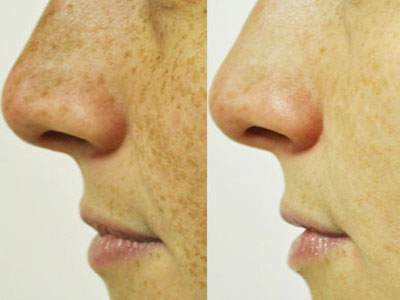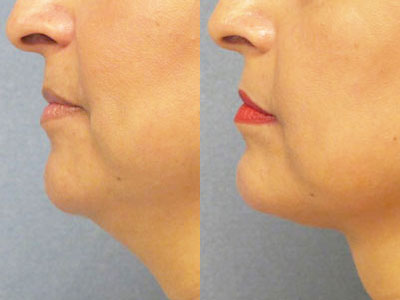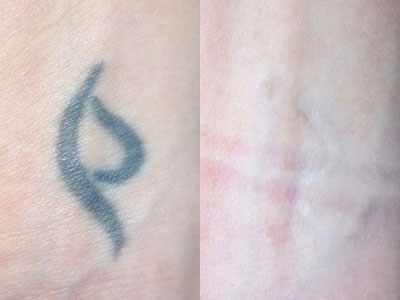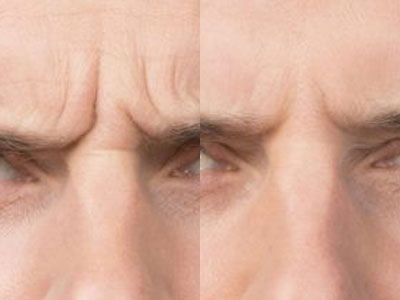You go to the gym regularly. You eat well. You drink enough water and you get enough sleep. You’ve taken every logical step to set your body up for success.
And, for the most part, your body has responded:
- Your weight typically doesn’t fluctuate a whole lot
- Your BMI is in a healthy range
- Your blood pressure and cholesterol numbers are good
But still, when you look in the mirror, there are just a few areas that don’t look how you want them to look.
So, what can you do?
Liposuction might be the answer. It could be the solution for your inherited love handles that just won’t disappear.
There are several types of liposuction. To help you decide which might be best for you, we’ve created this guide to review VASER Liposuction pros and cons and compare VASER to traditional liposuction.
What is Liposuction?
Liposuction refers to several types of surgical procedures that utilize suction to remove fat from specifically targeted areas of the body.
Four common types of liposuction include:
- Tumescent liposuction
- Ultrasound-assisted liposuction (UAL)
- Laser-assisted liposuction (LAL)
- Power-assisted liposuction (PAL)
Liposuction can be used on various parts of the body including, but not limited to:
- Buttocks
- Hips
- Thighs
- Abdomen
- Upper arms
- Chin
- Chest
- Neck
In addition to removing fat from unwanted areas of your body, liposuction can also be used to contour certain aspects of your body to highlight existing muscle tone.
Who is Liposuction For?
Generally, liposuction is not accepted as a method of weight loss, nor is it recommended as an alternative to diet and exercise.
To be a good candidate for liposuction, you should be at or close to an ideal weight for your body.
Additionally, you should:
- Be a nonsmoker.
- Have good muscle tone.
- Have firm, elastic skin.
- Not have any underlying medical conditions that can hinder the healing process.
You will have the greatest success with liposuction if you are targeting areas of your body that haven’t responded to a healthy diet and regular exercise.
If you’re wondering if you would be a good candidate for liposuction, schedule a free consultation with Bridgetown Aesthetics.
Is Liposuction Safe?
Liposuction has seen many advancements over the last several decades and made significant improvements in safety in the 1980s.
Since then, advanced technology has only made liposuction safer and it is currently the most commonly performed cosmetic surgery in the U.S. — over 400,000 procedures done annually.
That being said, as with any medical procedure, there are risks associated with lipo. Pros and cons of two types of liposuction will be reviewed in the following sections.
Before moving forward with liposuction, know that you will see the best results when it is performed by a board-certified plastic surgeon who has thoroughly reviewed your medical history.

VASER vs. Traditional Lipo
Liposuction is an umbrella term that covers all suction-based surgical fat removal processes. The many types of liposuction simply refer to the tools and techniques utilized to perform the procedure.
Most medical practitioners agree that all methods of liposuction can be effective. When choosing a liposuction method, the most important factors to consider are:
- Your specific aesthetic goals
- The amount of fat that will need to be removed
- Your medical history and anesthesia preferences
At Bridgetown Aesthetics we perform VASER Liposuction. Before we compare VASER Liposuction vs. traditional liposuction, let’s elaborate on each method:
- Traditional liposuction is the most invasive form of lipo. This method is often performed under general anesthesia and can remove significant amounts of fat (up to 14lbs) in a single session. Traditional liposuction uses motion — the back and forth movement of a cannula — to dislodge fat cells before removing them using suction.
- VASER Liposuction is a form of ultrasound-assisted liposuction. VASER Lipo is tumescent lipo with an added step to liquefy fat cells before they are suctioned out. This form of lipo is minimally-invasive but typically cannot remove quite as much fat in one session.
Traditional Lipo Pros and Cons
For traditional lipo, after an incision is made, a cannula is inserted into the deep fatty layer and moved back and forth. This motion breaks up fat cells which are then suctioned out of the body.
When compared to VASER Liposuction, traditional lipo pros and cons are:
Pros
- More efficient for those with a higher BMI
- A higher volume of fat can be removed in a single session
- Can be combined with other cosmetic surgeries like a tummy tuck
Cons
- More invasive
- Surrounding tissues can be damaged by the movement of the cannula
- Often requires general anesthesia
- Longer recovery time
VASER Lipo Pros and Cons
Like traditional lipo, in a VASER Liposuction procedure, cannulas are inserted into the deep fatty layer through small incisions. The key difference in VASER Liposuction is how the fat cells are dislodged.
Rather than using motion, VASER (which stands for vibration amplification of sound energy at resonance) uses probes that resonate at a high ultrasound frequency. This process “shakes” fat cells loose while leaving surrounding tissues undamaged.
When compared to traditional liposuction, VASER Liposuction pros and cons are:
Pros
- Minimally invasive
- Surrounding tissues experience less damage (no cannula movement required to break up fat cells)
- Out-patient — you can go home immediately after
- Less pain, bruising and bleeding
- Very precise and can target very specific areas
- Can be used to create natural contouring
Cons
- Not ideal for fibrous body tissue
- The procedure can take more time
- Not ideal for candidates with a higher BMI

VASER Liposuction Procedure
The length of your procedure will depend on which area(s) your doctor will be targeting and how much fat will be removed.
Many VASER Liposuction procedures can be performed in a physician’s office with local anesthesia. But, if that is unnerving for you, the use of general anesthesia is an option — often at an outpatient surgical office.
During your procedure:
- Small incisions will be made for the insertion of the cannulas.
- A numbing saline solution is injected.
- Ultrasound energy (VASER) will be used to break fat cells away from the surrounding tissue.
- The fat cells will be removed via suction.
Preparing For VASER Lipo
Before a VASER Lipo session, your doctor will provide information on steps to take to prepare for your procedure.
This will include any and all instructions related to:
- A skin cleansing regimen that will include a prescription soap to reduce infection at incision sites.
- Medications you may need to stop taking if they can cause an increased risk for excessive bruising or bleeding.
- Compression garment sizing — compression garments must be worn after liposuction sessions.
What to Expect After Vaser Lipo
After a VASER Liposuction procedure, you will be able to go home immediately if local anesthesia is used. General anesthesia may require longer recovery time in a surgical center.
In the days and weeks after your procedure, you can expect:
- Swelling
- Bruising
- Some discomfort (but not excessive pain)
You’ll want to walk often during recovery and wear your compression garments to manage swelling.
Hoping to Discuss VASER Liposuction Pros and Cons in More Detail?
If you are considering liposuction, the best thing you can do is sit down with a board-certified plastic surgeon to discuss your unique needs and aesthetic wishes.
With limited downtime and immediate results, VASER Liposuction may be an ideal option for you.
During a free consultation with Bridgetown Aesthetics, we will spend quality time explaining the procedure and evaluating you to see if you will be a good candidate.
Contact us today to schedule an appointment.






